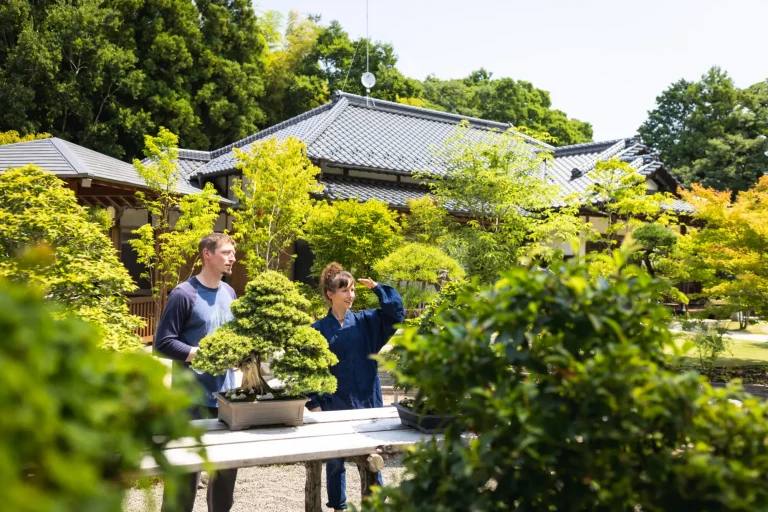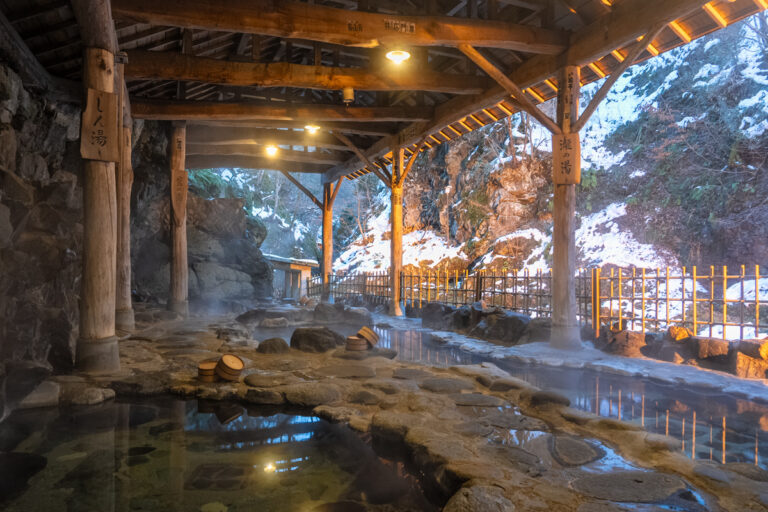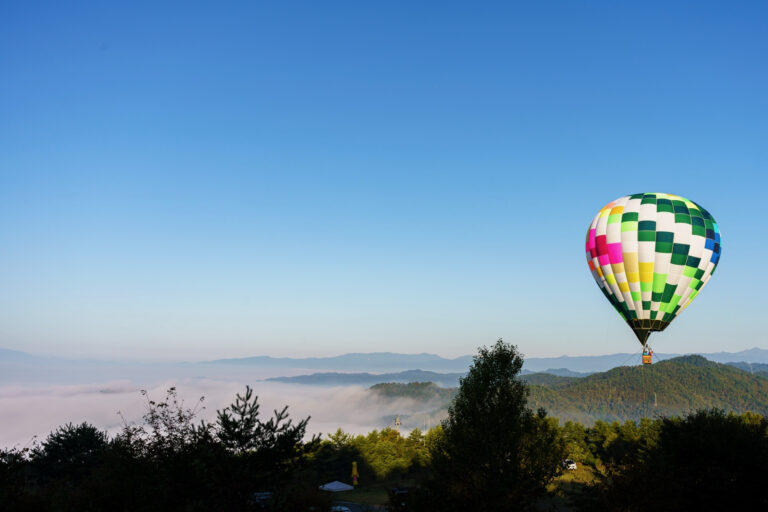Yamagata Prefecture
“Have you ever seen a rice kindergarten?”
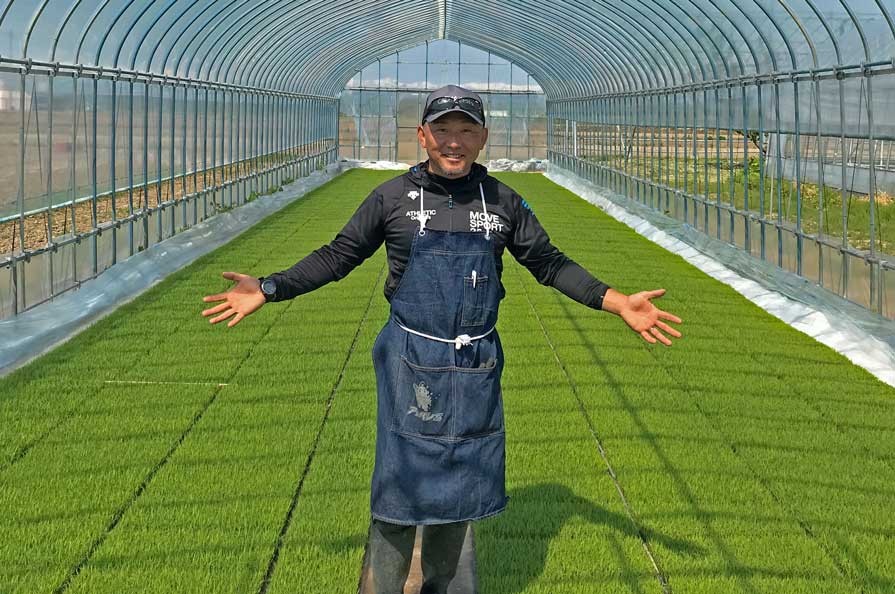
In a few days, farmers will start flooding the fields with water, and then the entire Shonai plain will shine like a mirror. In the distance, I can see the snowy peak of Mount Gassan, which for centuries has marked the time of planting rice. “Here, people have always lived according to the rhythm of nature.” says Gen and looks at the mountain. When the weather is beautiful, it reflects on the geometric water surface, creating a fantastic patchwork of blue, green, and white. Gen’s passion is not just growing rice – he is a practicing Buddhist monk, a ski instructor, and a motorbike runner.
However, for a few months of the year, he devotes himself exclusively to sake. In the old days, sake masters would leave home for the rice harvest in October and stay in the breweries until spring, working all winter to produce a beverage that has been present in Japan for nearly 2,000 years. “Technology is helping us now, but it’s still like raising a child – you feed it, look after it, put your heart into it, watch it grow and then let it go out into the world.” says Gen and leads me to the place, where I will learn the intricate secrets of sake production.
The 200-year old Mitobe Sake Brewery building casts long shadows in the afternoon sun when we greet Mr. Tomonobu Mitobe, the fourth-generation owner of the Yamagata Masamune brand, and together we walk into the impeccably clean interior smelling of wood.
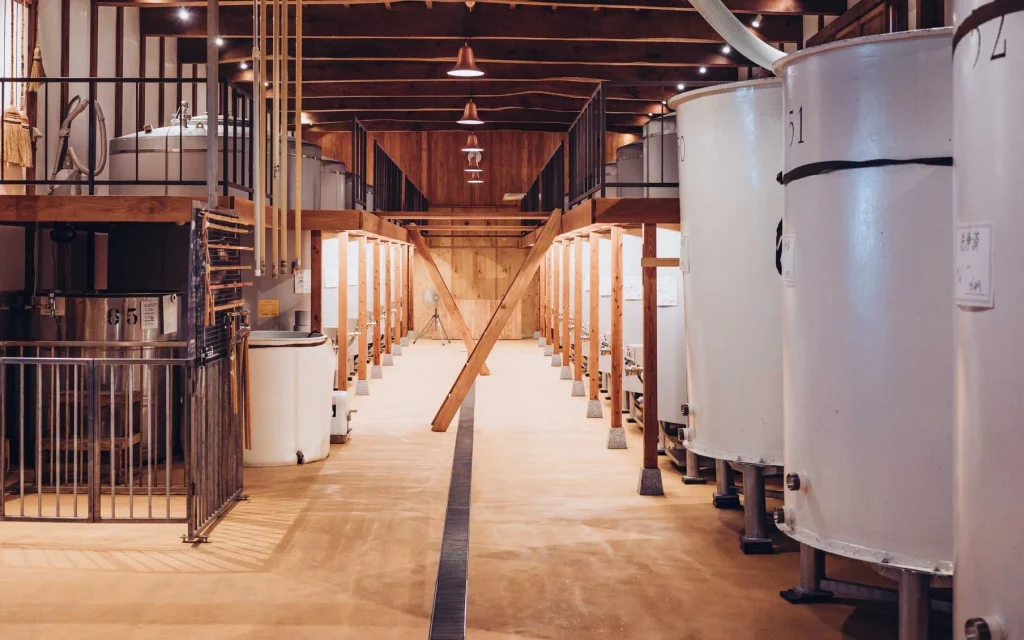
“The secret lies in the use of select varieties of rice and in the mineral-rich water that gives our sake a crisp, sharp finish, like the famous Japanese Masamune sword,” begins Mitobe. “In rice grains, starch is surrounded by proteins and fats that badly affect the taste and aroma of sake. That’s why the grains have to be polished: the more we polish the rice, the more concentrated starch we get and the better the sake. In our highest-class varieties called Junmai Daiginjo, grains lose as much as 70-75% of their original weight!”
However, for starch to convert into alcohol, it must first be “broken down” into simple sugars. At this point the magical ingredient comes into play – unique mold species Aspergillus Oryzae called koji. Polished rice is soaked in water, steamed and spread on wooden trays in a moisture- and a temperature-controlled room called kojimuro. Here rice is sprinkled with koji, which creates almost 50 different enzymes enabling starch to transform into simple sugars. After a few days, koji-rice looks like covered in sugar icing, and it’s time for sake masters to transport it into big tanks, add sake yeast and start fermenting process that will last for the next few weeks.
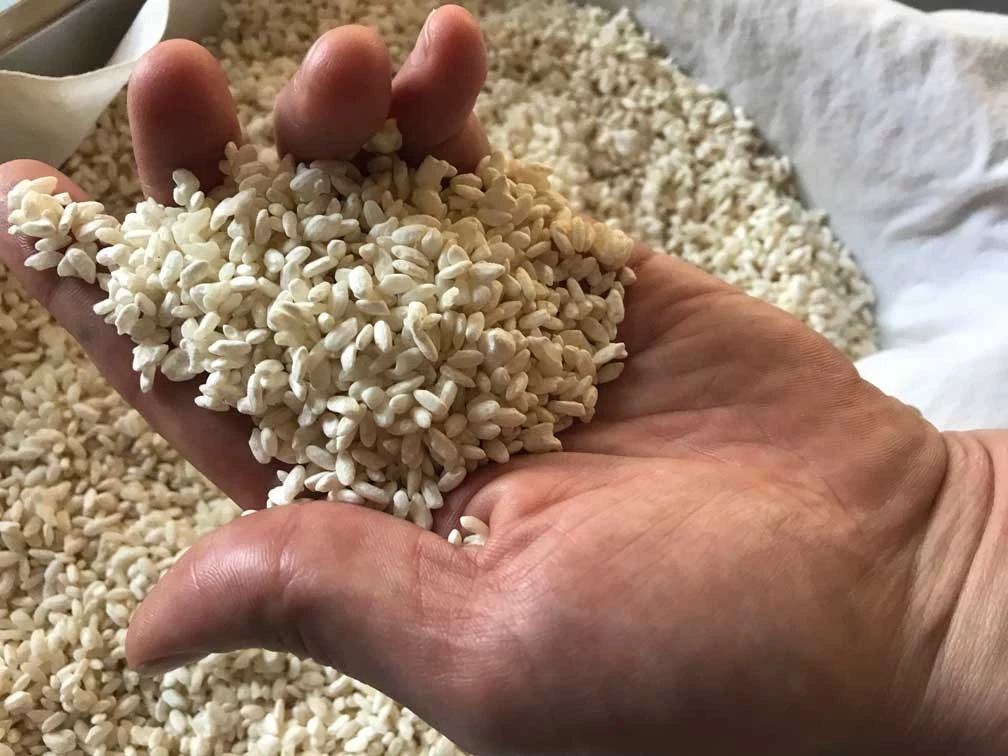

Later on, sake gets filtered and pasteurized. “Our brewery uses a traditional pressing machine called Fune that has been in use since the Edo period. The bags filled with unfiltered sake are hung up in the machine and pressed softly from the top. The liquid sake is separated from the rice lees very delicately, mainly by gravity. This way of filtering is exceptionally gentle, resulting in a pure and concentrated end product with full taste and aroma.” explains the owner.
When you order sake in Japan, you might embarrass the waiter because the word sake means simply “alcohol.” The correct local name is Nihonshu, which translates to “Japanese alcohol.” Sake is served in small ceramic or glass bowls called “ochoko”. They are stunning, and everyone in Japan has a whole ochoko collection of different shapes and colors. During the dinner, I test various kinds of sake, specially selected for each dish. Every time I’m served new sake, I get a different ochoko.
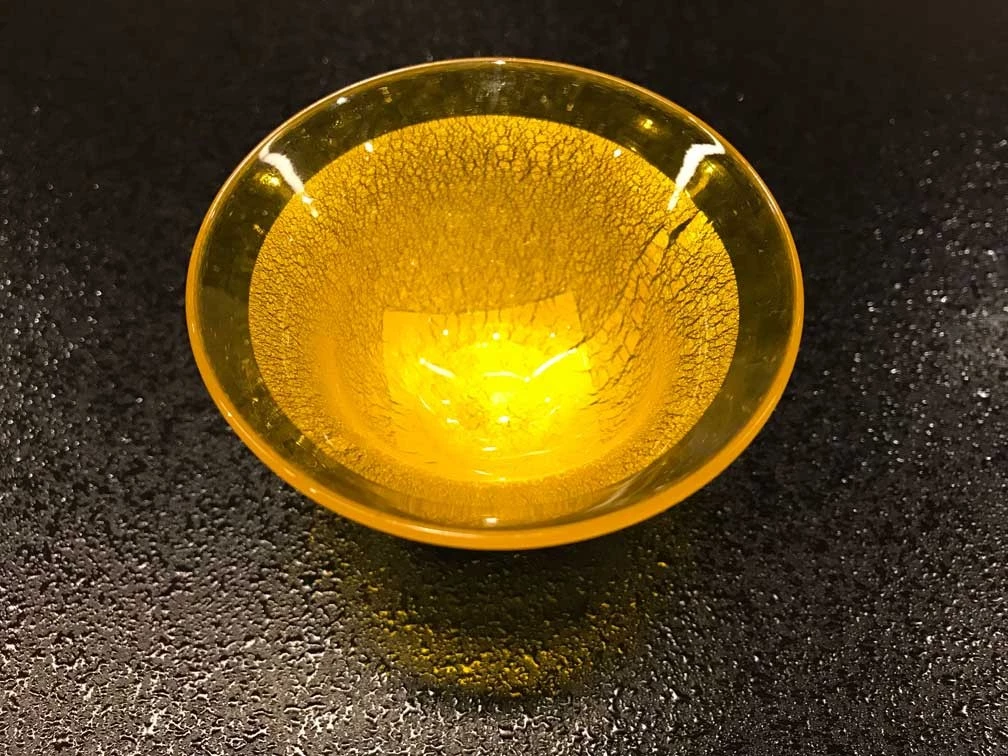
There is no single rule regarding the temperature of serving sake – some taste best cold, even on ice (especially the unfiltered types, like my favorite milky Nigorizake, or unpasteurized Namazake). Others release taste and aroma best when heated to a temperature of about 45-50 degrees Celsius.
“Try this,” says Mitobe, who is also accompanying me during the evening. “What do you think?” I drink Malola sake in small sips and enjoy the taste – it is unique, different from the others, extremely mild. I can feel velvety peach tones and a touch of apple. To create it, Mitobe used malolactic fermentation, instead of yeast. “I’ve always been rebellious and wanted to do things my own way,” he smiles. “I also want to highlight the role of the rice type in sake, just as wine is defined by the grape variety. My goal is the stronger bond of local producers with the region.”
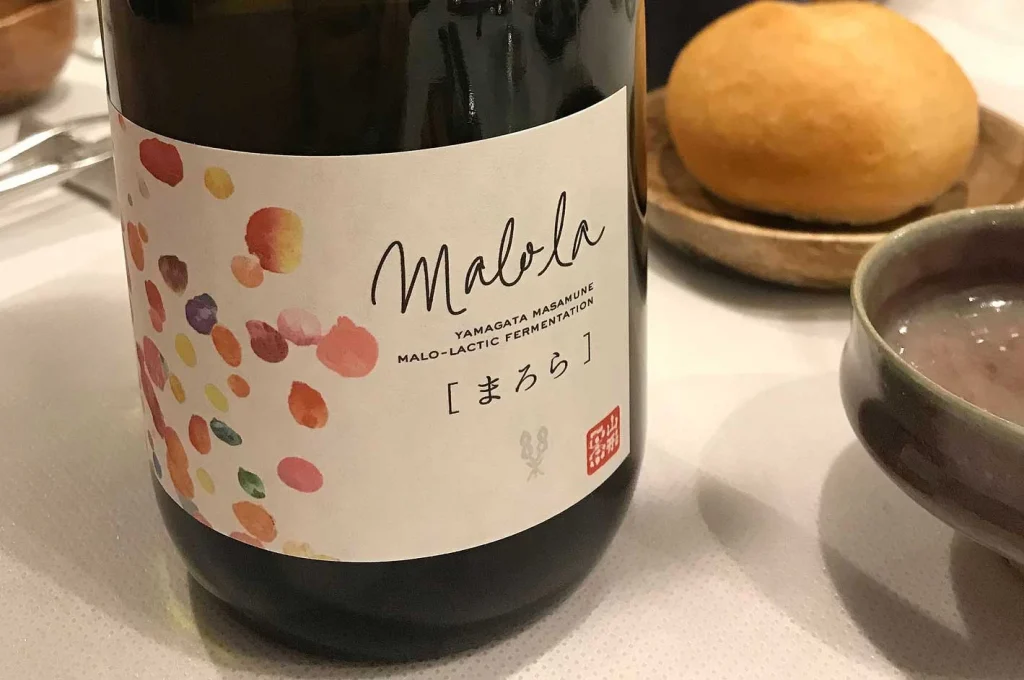
In earlier times, sake rice used to be sourced only from Hyogo prefecture, because sake was supposed to taste everywhere the same. Nowadays, the young generation of producers is breaking these rules. They grow local varieties of rice, introduce their own methods inspired by wine production, modify the fermentation process or experiment with the aging of alcohol in cedar barrels. And it works well, although they say that the sake-master, who created the first sparkling champagne-like sake, tried more than 500 times before achieving a satisfactory result! In a situation where the domestic market is shrinking year by year, it is a chance for sake to become fashionable again among young Japanese people.
Contrary to Japan, the popularity of this beverage in world markets is growing. Sake pairing can already be found in many Michelin star or 50 Best restaurants, not to mention sake micro-breweries popping up in the USA or Canada.
“Have you ever seen green rice terraces?” Mitobe suddenly asks. “It is a breathtaking scenery. With every sip of sake, close your eyes and imagine rice plants rustling in the wind and the water flickering in the sunlight. This should give you a feeling of calmness and inner peace. It certainly does for Japanese people, for whom appreciation for rice is encoded in their DNA.”
I close my eyes, I feel people’s passion, love, and respect for the earth. And for a moment I feel like being a part of their world.
Learn more about Yamagata’s sake here.

Anna Drozdowska
Anna works in Brand Management / Tourism Consulting / Sustainable Food & Wine / Regenerative Food Systems Activist / Planet Happiness Ambassador / Destination Marketing Storyteller / AgriTourism / Hotels / Communication Expert/ diplWSET.
Read more...
A photo journey through Miyagi Prefecture with a group of tourism professionals from across Japan for a week long trip.
Discovering the Okitama Region through Immersive Outdoors and Cultural Experiences.

